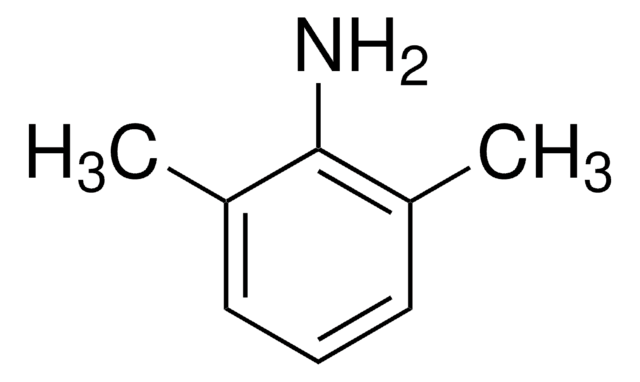推荐产品
等級
pharmaceutical primary standard
API 家族
bupivacaine
製造商/商標名
EDQM
應用
pharmaceutical (small molecule)
格式
neat
儲存溫度
2-8°C
InChI
1S/C18H28N2O.ClH/c1-4-5-12-20-13-7-6-11-16(20)18(21)19-17-14(2)9-8-10-15(17)3;/h8-10,16H,4-7,11-13H2,1-3H3,(H,19,21);1H
InChI 密鑰
SIEYLFHKZGLBNX-UHFFFAOYSA-N
相关类别
一般說明
This product is provided as delivered and specified by the issuing Pharmacopoeia. All information provided in support of this product, including SDS and any product information leaflets have been developed and issued under the Authority of the issuing Pharmacopoeia.For further information and support please go to the website of the issuing Pharmacopoeia.
應用
Bupivacaine hydrochloride EP Reference standard, intended for use in laboratory tests only as specifically prescribed in the European Pharmacopoeia.
包裝
The product is delivered as supplied by the issuing Pharmacopoeia. For the current unit quantity, please visit the EDQM reference substance catalogue.
其他說明
Sales restrictions may apply.
相關產品
产品编号
说明
价格
訊號詞
Danger
危險分類
Acute Tox. 1 Inhalation - Acute Tox. 2 Dermal - Acute Tox. 2 Oral
儲存類別代碼
6.1A - Combustible acute toxic Cat. 1 and 2 / very toxic hazardous materials
水污染物質分類(WGK)
WGK 3
閃點(°F)
Not applicable
閃點(°C)
Not applicable
其他客户在看
David R Walega et al.
Journal of oral & facial pain and headache, 28(2), 171-175 (2014-05-14)
Burning Mouth Syndrome (BMS) is a chronic painful disorder characterized by unremitting bilateral burning oral pain often associated with taste abnormalities and complaints of dry mouth. The diagnosis is made by history and symptom presentation in the absence of an
David Buck et al.
Anesthesia and analgesia, 119(1), 137-140 (2014-06-20)
An otherwise healthy 11-month-old, 8-kg infant presented for an elective circumcision. After a penile block with an excessive dose of 0.5% bupivacaine, the patient progressed to ventricular tachycardia. He was resuscitated with intralipid and had an uneventful recovery. The case
Michael J Beebe et al.
Clinical orthopaedics and related research, 472(5), 1394-1399 (2013-07-17)
Continuous femoral nerve block has been shown to decrease opioid use, improve postoperative pain scores, and decrease length of stay. However, several studies have raised the concern that continuous femoral nerve block may delay patient ambulation and increase the risk
Mingquan Chen et al.
Anesthesia and analgesia, 118(4), 863-868 (2014-03-22)
In this study, we sought to determine the median effective dose (ED50) for motor block of intrathecally administered plain bupivacaine in adults (20-80 years) and to assess the effect of age on ED50 required for motor block. This study was
Michael R Fettiplace et al.
Anesthesiology, 120(4), 915-925 (2014-02-06)
Recent publications have questioned the validity of the "lipid sink" theory of lipid resuscitation while others have identified sink-independent effects and posed alternative mechanisms such as hemodilution. To address these issues, the authors tested the dose-dependent response to intravenous lipid
我们的科学家团队拥有各种研究领域经验,包括生命科学、材料科学、化学合成、色谱、分析及许多其他领域.
联系技术服务部门






